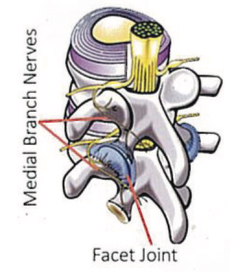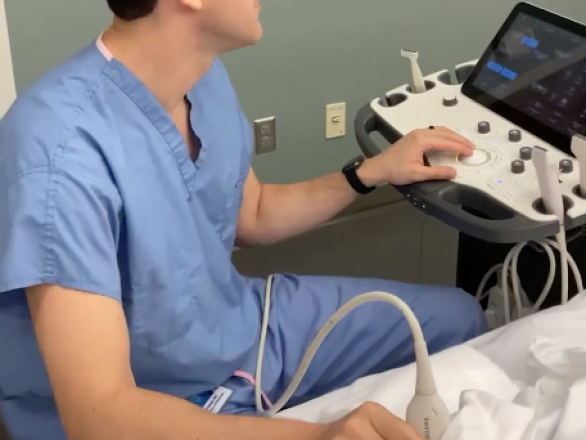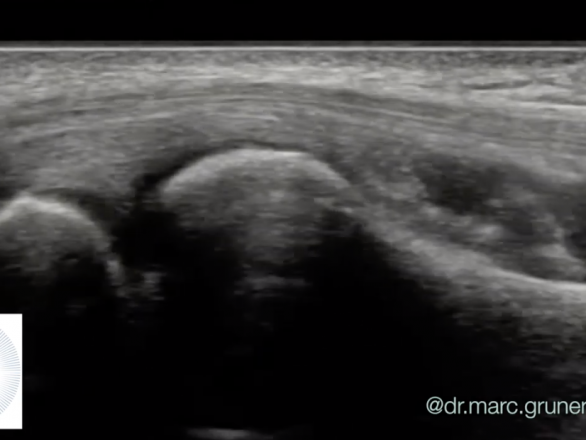
Chronic exertional compartment syndrome is one of the most common causes of pain, numbness, and foot drop, most often seen in runners.

Facet joints connect the vertebrae, the bones of the spine. They help guide your spine when you move. The low back area of the spine is called the lumbar region. It contains five vertebrae.
Facet joints are found on both sides of the spine. Each is about the size of a thumbnail. Lumbar facet joints are named for the vertebrae they connect and the side of the spine where they are found. The left L4-5 facet joint, for example, joins the 4th and 5th lumbar vertebrae on the left side.
Medial branch nerves are found near facet joints. They communicate pain from the facet joint. They tell the brain when facet joints have been injured.
You may feel pain if a lumbar facet joint is injured. Sometimes it feels like muscle tension. Other times it can be severe pain.
The cartilage inside the joint may be injured. Other times only connecting ligaments surrounding the joint are injured.
Facet pain also depends on which joint is affected. Lumbar facet joint pain can occur in an area from your low back down to your buttocks, groin, and hips. The diagram shows areas of pain usually associated with lumbar facet injuries.
If you have pain in one or more of these areas, and it has lasted longer than two months, you may have lumbar facet pain.
Common tests such as x-rays or MRIs may not always show if a facet joint is causing pain.
The best way to diagnose facet pain is to block the pain signal in a medial branch nerve with a local anesthetic (numbing medicine).
RFA uses radiofrequency energy to disrupt nerve function. When this is done to a lumbar medial branch nerve, the nerve can no longer transmit pain from an injured facet joint.
A local anesthetic will be used to numb your skin. The doctor will then insert a small needle near the facet joint. Fluoroscopy, a type of x-ray, will be used to position the needle. The doctor will then check to make sure it is at the correct nerve by stimulating it. This may cause muscle twitching and provoke some of your pain.
Once the needle is properly placed, the nerve will be numbed. Radiofrequency energy will then be used to disrupt the medial branch nerve. This is often repeated at more than one level of the spine.
You will be monitored for up to 30 minutes after the RFA. When you are ready to leave, the staff will give you discharge instructions. You will also be given a pain diary. It is important to fill this out because it helps your doctor know how the RFA is working. Take it easy for the rest of the day.
You may feel sore for one to four days. It may be due to muscle and nerve irritation. Your back may feel numb, weak, or itchy for a couple weeks. Maximum pain relief normally comes in two to three weeks, but can take as long as six to eight weeks.
Nerves regenerate after an RFA, but how long this takes varies. Your pain may or may not return when the nerves regenerate. If it does, another RFA can be done.
301.493.8884
Dr. Mark D. Klaiman, MD
Monday – Friday: 8am – 5pm
301.244.9099
Dr. Haim S. Hechtman, DPT
Monday – Thursday: 7am – 7pm
Friday: 7am – 5pm
Saturday: Closed
“When I learned that my two favorite practitioners—who gave me back a normal, pain-free life—were joining their practices I thought, what a winner…..”
– Jane Stanley



Chronic exertional compartment syndrome is one of the most common causes of pain, numbness, and foot drop, most often seen in runners.

Hip arthritis is one of the most common causes of groin pain in patients. To diagnose it, we can use ultrasound. Ultrasound

Tennis elbow is one of the most common causes of elbow pain. The condition is also sometimes referred to as lateral epicondylitis.
Starting and sticking with a rehabilitation regimen has its challenges during the pandemic. Here are some ways to continue to progress.
|
Point Performance Medicine is Excited to Announce the use of Scrambler Therapy for the Treatment of Chronic Nerve Pain |